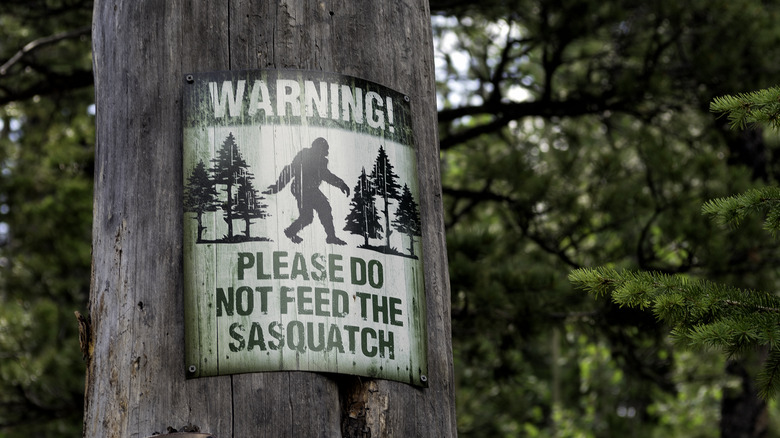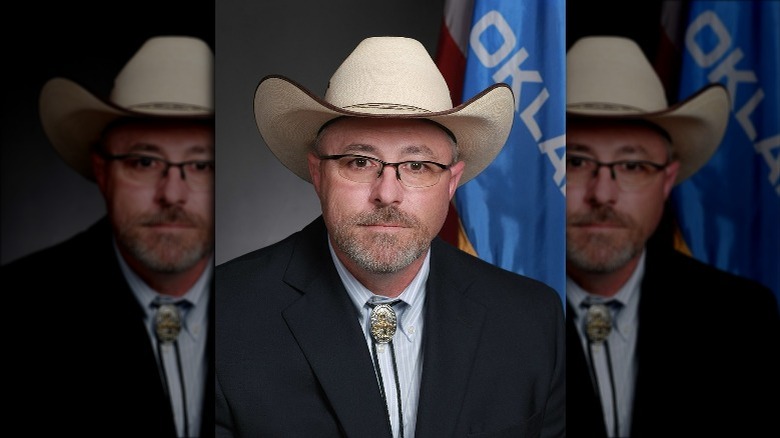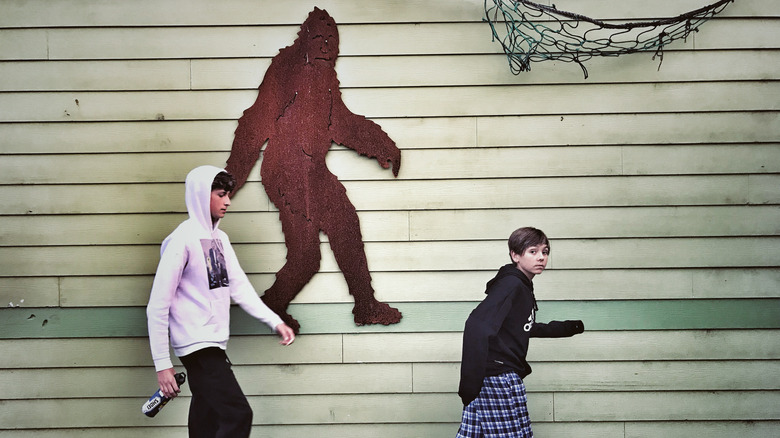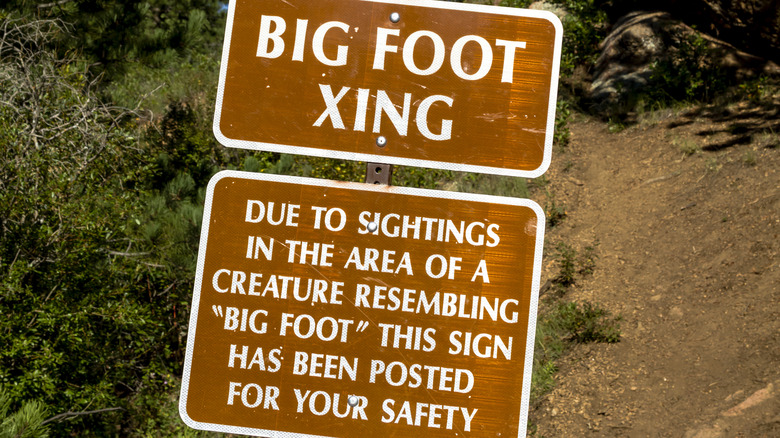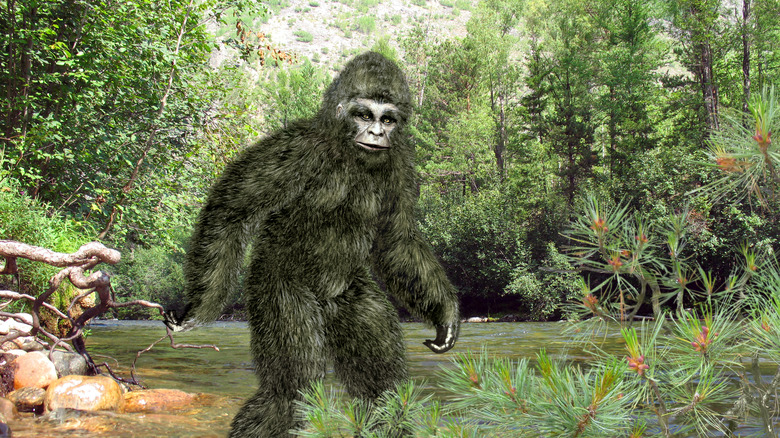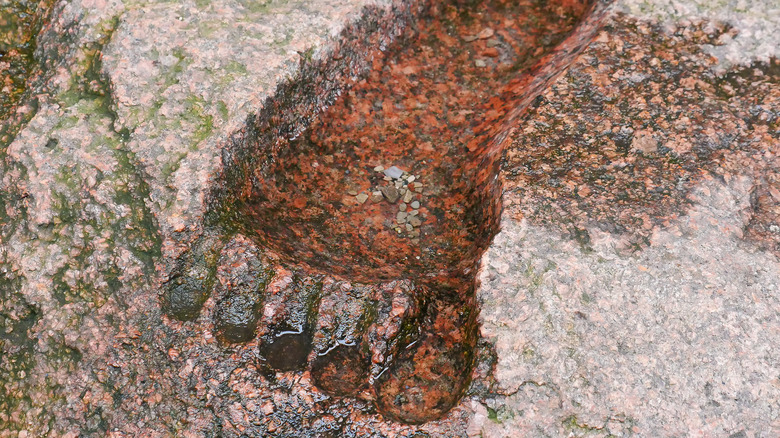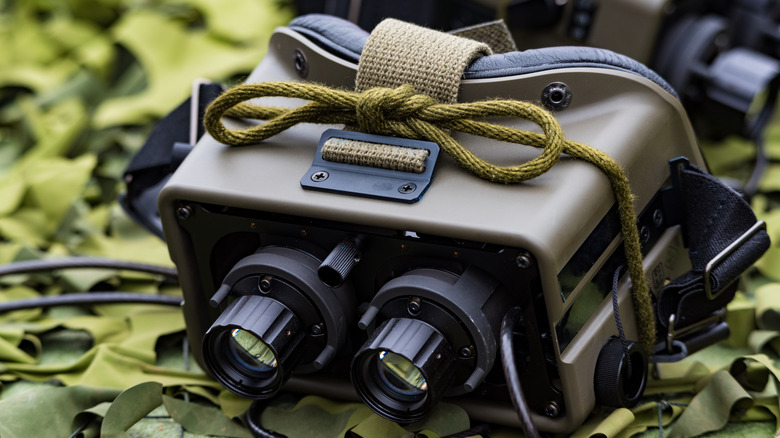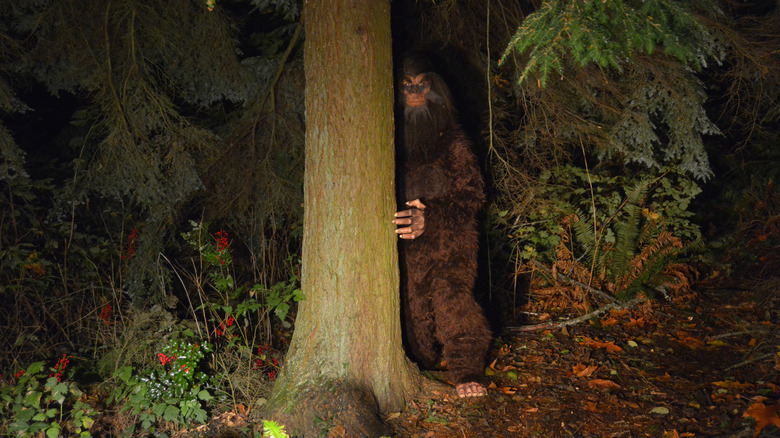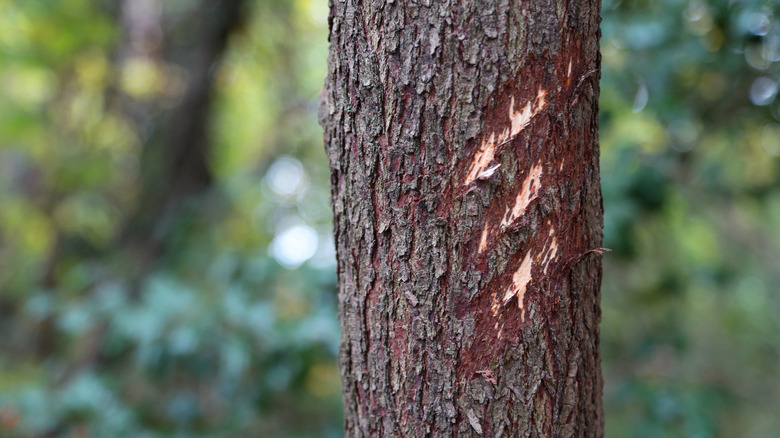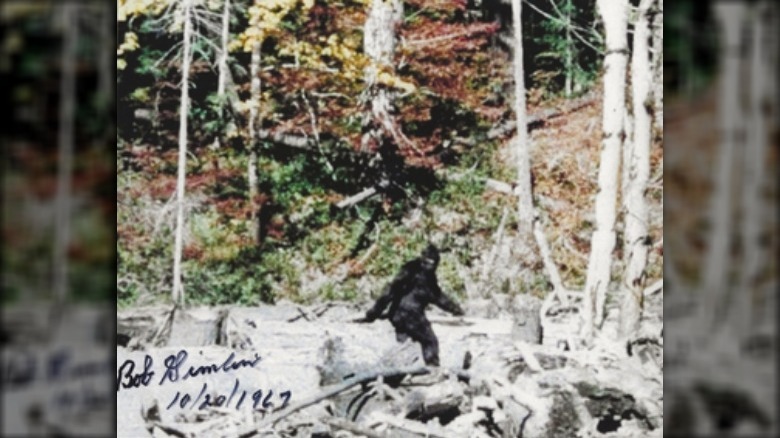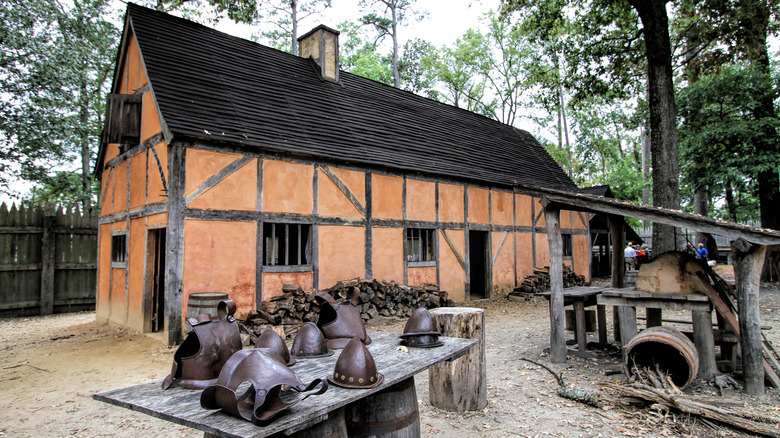
Bigfoot: What You Need To Know When Hunting For Sasquatch
Bigfoot. The Sasquatch. Whatever it’s called in your neck of the woods, you might decide — probably while drunk with a bunch of your old college friends — that you want to head into said woods and search for the beast. But gallivanting off into the deep woods with no experience is dangerous at the best of times. Add to that the fact that you’ll be hunting a giant man-ape, who maybe won’t appreciate being hunted, and you’ve got a recipe for disaster.
Thankfully, you can learn from the giants of giant man-ape hunting who have gone before. Looking for Bigfoot is surprisingly popular, and not just with the sort of … unique individuals you are probably thinking of. It’s such a big deal that there are even Bigfoot experts you can turn to as guides, or just read their books or watch their TV appearances to glean their years of knowledge. If you make sure to take a few simple things onboard, you too can have a fun, safe, and successful Bigfoot hunt.
And what about the tiny issue that Bigfoot probably doesn’t exist? Well, that hardly seems to matter when you talk to the people who enjoy chasing the fantasy. Here’s what you need to know when hunting for Sasquatch.
Bring along the food Bigfoot likes
You know how when you go camping you need to make sure all your food is out of the reach (and smell) of bears, lest they come find you? You are supposed to do the opposite with Sasquatch. (But … the bears…)
“Any scientific expert will tell you [that] me and the ‘Squatch like the same things,” Bigfoot expert Bobo Fay told The Huffington Post. “Well, four out of five scientists say that.” Sure, the theory makes sense, but since these scientific experts don’t seem to be falling over themselves to tell the general public how to lure Bigfoot with food, you’ll have to take Fay’s word for it. Lucky for you, he has a lot of words on the subject, and claims to have a “keen insight.”
“Since the early 1900s, there’s been reports from people saying, ‘I was cooking bacon, and the [Bigfoot] came in and licked the pan clean when I set it down later,'” he said. “They love cooked food. It puts the smell in the air.” Other warm meals that tempt Bigfoot apparently include chicken wings, which they must see as a nice break from their regular diet of raw meat. A less obvious example of things Bigfoot enjoys? Apples. “They like the fact that deer are attracted to the apples,” Fay said. Blueberries will also work, since fruits and berries are also thought by Bigfoot experts to be part of their diet in the wild. Perhaps the weirdest food Fay uses to lure the creatures? Doughnuts.
Look into a Bigfoot hunting license
If you are planning to hunt an animal in the traditional sense, you almost always need a permit. And while many Bigfoot hunters may simply be searching for the creature, with no intention at all to try to capture it with anything other than a camera, and certainly not to kill it, there are others who are out there, gun in hand, ready to bring the dead beast back so there can be no doubt it existed. And since hunting and Bigfoot are both big money makers, why not officially combine the two?
In January 2021, Oklahoma State Rep. Justin Humphrey (pictured) introduced a bill to sell Bigfoot hunting licenses. No, he doesn’t believe the Sasquatch is running around Oklahoma, but he knew it would be a tourism boon, according to Travel and Leisure. “Establishing an actual hunting season and issuing licenses for people who want to hunt Bigfoot will just draw more people to our already beautiful part of the state. It will be a great way for people to enjoy our area and to have some fun,” he said.
A lot of people knew it was a joke, but that didn’t stop them wanting to spend money on it. Humphrey said many had already called, saying they want to “buy a license because they want to frame it on the wall.” For any who would have taken it more seriously, killing Bigfoot would not have been allowed, but capturing him would have. Sadly, virtually no one else in the Oklahoma government was on board, and the bill went nowhere.
Be sure to hunt Bigfoot with a team
Anytime you go off into the woods you should bring someone with you, and this goes double when you’re hunting a giant ape-man. On its list of tips for hunting Bigfoot in Washington State, Seattle Magazine points out that setting off into the woods with at least one other person “is smart and more fun; and two sets of eyes expand the range of your survey.”
If you want to go with a larger group, there are plenty of organizations out there ready to take you to the woods. The Bigfoot Field Researchers Organization hosts many expeditions in states across the U.S. every year, but they are pricey at $300–500 per long weekend, depending on the location. If you can’t afford that, or don’t feel like spending half a grand on a glorified camping trip, local groups can be much cheaper. According to Outside, for example, the SouthEastern Ohio Society For Bigfoot Investigation (SOSBI) only charged $10 to come on one of their group campouts in 2012.
And sometimes, it’s about more than physical safety or the added benefits having a Bigfoot hunting partner can bring to evidence collection. Sometimes it’s just about love and companionship. Todd, a member of the SOSBI, who had so far failed to find a girlfriend who shared his interest in Bigfoot, said, “It’s good to have anyone to go on these hikes with — especially someone like a mate.” If he — or they — is out there, the ape-man probably understands that feeling.
Look in places the Sasquatch has been seen before
Considering we’re talking about a giant man-ape, there are only so many places it could be hiding. But even then, those places are often vast, and would take way too long to search thoroughly. Unless you plan on devoting every minute of the rest of your life to looking behind every tree in America and Canada, you need a gameplan.
The best place to start looking for Bigfoot are the places he’s been seen before. It stands to reason that if someone else, or maybe numerous someones, saw Bigfoot in a particular location, you are more likely to as well.
But how to go about learning where Bigfoot has been seen? Well, there’s a website for that, because of course there is. The Bigfoot Field Researchers Organization claims that it is “the only scientific research organization exploring the Bigfoot/Sasquatch mystery.” Its lists make it easy to know where to start your search. For example, out of the 50 U.S. states, Washington is well in the lead, with 697 listed sightings. California comes in second with 456, and then, perhaps unexpectedly, Florida with 333. British Columbia is atop the Canadian province sightings. A few other countries are listed as well, although based on the numbers, Bigfoot doesn’t seem to leave home much. He was seen a chart-topping 36 times in Malaysia, although the last sighting was in 2006. And in 2002, Bigfoot went on vacation to Australia, where he was spotted for the only time in that country’s history.
Don't be scared of Bigfoot
There’s plenty to be scared of in the woods even without adding a giant man-ape to the equation. It’s logical to be scared of a Bigfoot encounter, just like you’d be scared of a grizzly bear. After all, Bigfoot is supposed to be just as big, and possibly even more intelligent.
So should you arm yourself? Carry mace? Well, according to Bigfoot experts, the creatures are not going to harm you. The Bigfoot Field Research Organization (BFRO) explains, “There are no modern reports of humans being injured or killed by a sasquatch.”
The key word there is “modern,” because there is at least one secondhand report of a Bigfoot killing a man, and the person secondhand reporting it was no less than Teddy Roosevelt himself, in an 1890 book. The BFRO records the future president wrote of a story of two trappers out west who were being stalked by a “sasquatch-like animal” that also ransacked their camp repeatedly. They fired at it, but did not kill the beast. This was unfortunate for one of the men: “While collecting their traps, the men split up. One was delayed for hours as he prepared beaver caught in the last of the traps, the other headed straight back to camp. His body was found by his partner later that day near the campfire. The dead man had a broken neck. The neck showed teeth or claw marks, but the body was not eaten.”
Still, that’s just one guy. You’ll probably be fine.
Know what evidence you're looking for
Not every pile of poo or scratch on a tree is going to be made by a Bigfoot. In fact, almost all of them won’t be. That’s why it’s important to know what kind of evidence you are looking for in the first place, before you go searching. If you want to add to the vast repository of cryptozoological knowledge, you’ll need to do your research pre-hunt. Just think of coming back, shouting about your amazing new evidence of Bigfoot, only to be laughed out of the Bigfoot-hunting club. You’d never be able to show your face in public again.
Bigfoot researcher Jeffrey Meldrum recommends getting an education in biology or anthropology before you become a Bigfoot hunter. Not only will it make you more legitimate, but it will also help you understand the signs that animals — and maybe Bigfoot — leave in the woods. A writer for Outside went on a Bigfoot hunt with a group, and the experts explained to her to look for signs of Bigfoot as varied as bark peeled off trees, broken branches, and stacks of rocks. The Bigfoot Field Researchers Organization (BFRO) even recommends collecting any apples or potatoes you find with distinct teeth marks.
Once you find something you think could be evidence of Bigfoot, it’s vital you also know how to record it, or it could end up being useless. The BFRO has an exhaustive page detailing how to photograph tracks, how to collect biological evidence, and how to avoid contamination.
Go high-tech if you really want to find Bigfoot
There are the amateur Bigfoot hunters, who head off to the woods with a map and a prayer. They have a nice day out and take some pictures of unidentifiable poop or a recording of a weird sound and are perfectly happy. But if you want to get really serious about your search for the Sasquatch, you can bring a lot more high-tech equipment with you. It’s a lot like ghost hunting in that way. And if you are going to go to all the trouble of looking in the first place, you should probably give yourself the best tools for the job.
The Bigfoot Field Researchers Organization (BFRO) (via Outside) recommends a whole bunch of high-tech equipment that, if you wanted to go all out, would cost a shocking amount of money. Part of the problem is that Bigfoot are only thought to go out at night, when you can’t just look up and see one. Really serious hunters use “military-spec” night vision scopes, plus thermal imagers. And you’ll need a few trail cameras to cover promising spots when you aren’t there. Plus some recording devices, and remote speakers to send out calls for any nearby Bigfoot. Oh, and a drone with some or all of that tech too, which is apparently the “future of Bigfoot hunting.”
If you don’t feel like breaking the bank to hunt Bigfoot, the BFRO also says you can put together an “excellent” kit to monitor forest sounds for as little as $40.
Learn what the Sasquatch sounds like
Bigfoot hunters say the creatures leave behind clues like poop, scratches, and fur, but the most important evidence you’re likely to find during your search isn’t physical at all: It’s a sound.
Seattle Magazine says that Bigfoot “vocalizations” are known to have a very distinct tone: “Sasquatch speech is said to sound like, well, Chewbacca: a mix between a bear growl and human yell.” Meanwhile, Outside says “They communicate with long, moaning howls that sound like ambulance sirens.” The author of that article went Bigfoot hunting with a group and found herself in the woods with a couple who would occasionally “shriek and shout gibberish,” to communicate with any Bigfoot that might be nearby, and who explained that “Bigfoot is attracted to female voices.” Another woman in the group let out a “call,” which the author says was a “a high-pitched wail” that made her toes curl and echoed around the woods. Sadly, neither of these attempts elicit a response from Bigfoot, explained away as there being “not much activity” that night.
And in case these different versions of what you should be listening for are confusing, the Bigfoot Field Research Organization has recordings you can listen to so there is no doubt. They even provide recordings of coyotes as a comparison, since, apparently, the howls of coyotes are “often mistaken” for the voice of Bigfoot. (Of course, considering how many coyotes one might hear in a night, that would make the population of Sasquatches unreasonably large.)
Try to debunk your own findings
This is perhaps the most shocking tip given to novice Bigfoot hunters. After all, people who are serious about finding a probably mythical creature must see evidence of Bigfoot everywhere. If the search isn’t rational, why should evidence collection be anything more than claiming anything and everything is proof the giant man-ape exists?
But the experts don’t think that way at all, and they don’t recommend new Bigfoot hunters start their search trying to find evidence of Bigfoot, but rather trying to disprove it. Steve “Mojo” Wilkins of the Washington Sasquatch Research Team told Seattle Refined, “When you research and discover potential evidence (i.e., tracks, pictures, vocalizations), try to debunk it and don’t always assume everything is ‘bigfoot related.’ Try to find other explanations for evidence you find.”
North Coast Journal talked to Bigfoot researcher Jeffrey Meldrum about his experience with evidence-happy newbies. They write “Meldrum sighs recounting going out in muddy terrain with students who see enormous footprints in every depression. He’s learned to be cautious of amateur observation.” So when collecting evidence, don’t make poor Jeffrey Meldrum sad. Question everything. But do that questioning within the bounds of what is acceptable in polite society. You might have found some odd animal droppings and, after comparing them to pictures of known animal droppings (because this is what your life has come to), decided they could be from Bigfoot, and you want an expert opinion. Do not mail the poop to Meldrum unsolicited, as he says other people have. This will also make him sad.
Prepare for some hate
Not surprisingly, not everyone thinks Bigfoot is real. Instead of just going about their non-believing lives and leaving the true Bigfoot believers to their fun, some of these people decide they need to express their displeasure that others have different opinions than them. With everything else there is to disagree about in the world, it does seem rather stupid, but apparently lots of Bigfoot hunters get hate and abuse from the general public.
Bob Gimlin was one of the two men famous for capturing the most famous piece of supposed evidence of Bigfoot, a short video taken in 1967. But according to what he told KNKX, being part of it ruined his life for a time. The video, which he firmly believes in, resulted in non-stop jokes at his expense, even people driving up to his house in the dead of night to mock him. Even his wife wasn’t safe from the hate. Gimlin says, “They’d razz her about it where she was working, and she’d come home a bawlin’.”
Bigfoot researcher Jeffrey Meldrum told North Coast Journal he’s experienced “vitriol” and even had people try to destroy his career in science. The hate is one reason Bigfoot hunters have made their own safe spaces, like the SouthEastern Ohio Society For Bigfoot Investigation, which explained on Facebook (via Outside) that it is a forum created “to give everyone and anyone the chance to talk about Bigfoot without the fear of being made fun of or taunted.”
Accept that even if you never see Bigfoot, it was worth it
The modern world is almost too convenient, with our every whim seemingly just a click and a few minutes away. So it’s understandable that newbies would think the point of looking for Bigfoot is to actually find him. Obviously, that’s the whole point, right? Plus the fame and money that would come with it? Why else would anyone spend their time looking for a creature that probably isn’t real?
Slow down there. Sometimes, life isn’t about the destination, it’s about the journey. For many Bigfoot hunters, the point isn’t to find him, the point is to have fun while trying. National Geographic spoke with Tyler Bounds, an investigator with the Bigfoot Field Researchers Organization. He recommends treating a Bigfoot hunt like a regular old camping trip in most ways, making sure it’s a good time with laughing and singing and s’mores. “You go out and you pitch a tent, you do your thing, but now you’re paying attention to other things besides what you usually pay attention to.”
And there are worse hobbies to have. “I’ve been all over the States and seen some amazing things — landscapes and sunsets and hills and mountains,” Bounds said. “Even when nothing happens, you’re still in the woods. You’re still out in it.”
And then there’s the upside to just having an open mind. As Bounds pointed out, “There’s something to be said for the unknown, the unsolved mysteries of the world.”
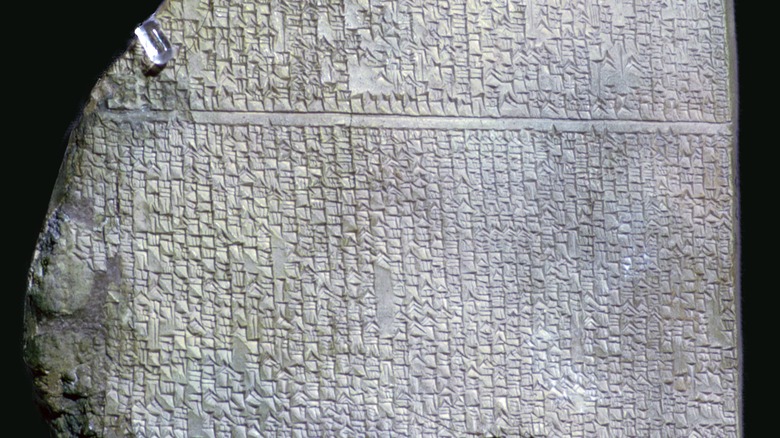
Gilgamesh Dream Tablet: The Untold Truth
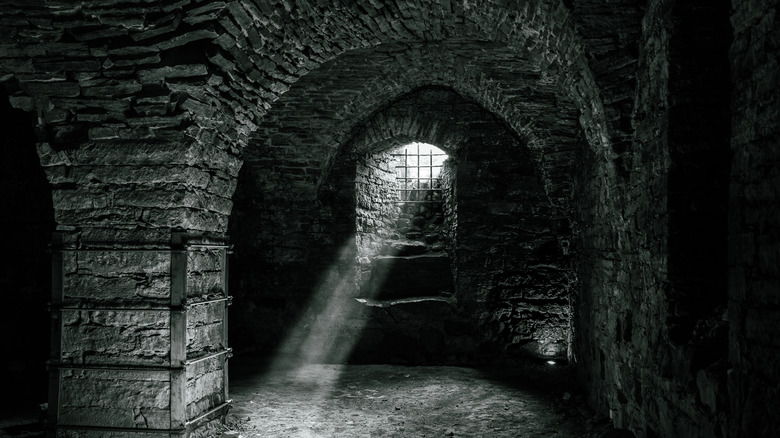
The History Of The Strappado Torture Method

The Tragic Story Of Emperor Franz Joseph I

The Tower Of Babel Explained

The Real Story Behind Rick Springfield's 'Jessie's Girl'

This Is How Much Andy Warhol Was Worth When He Died

The Potentially Deadly Pseudoscience Of 'Breatharianism' Explained
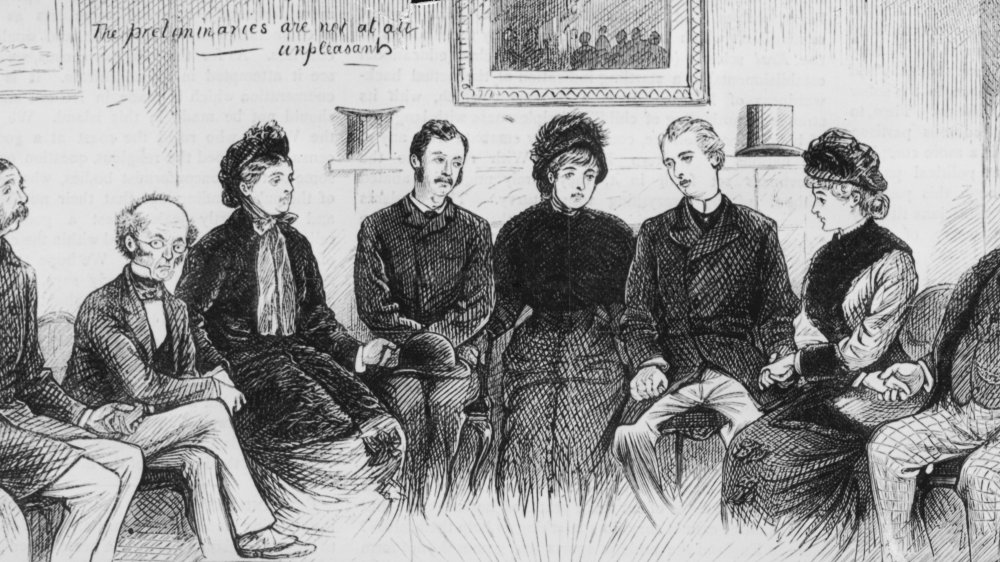
The Surprising Way Ouija Boards Were Used During The Victorian Era
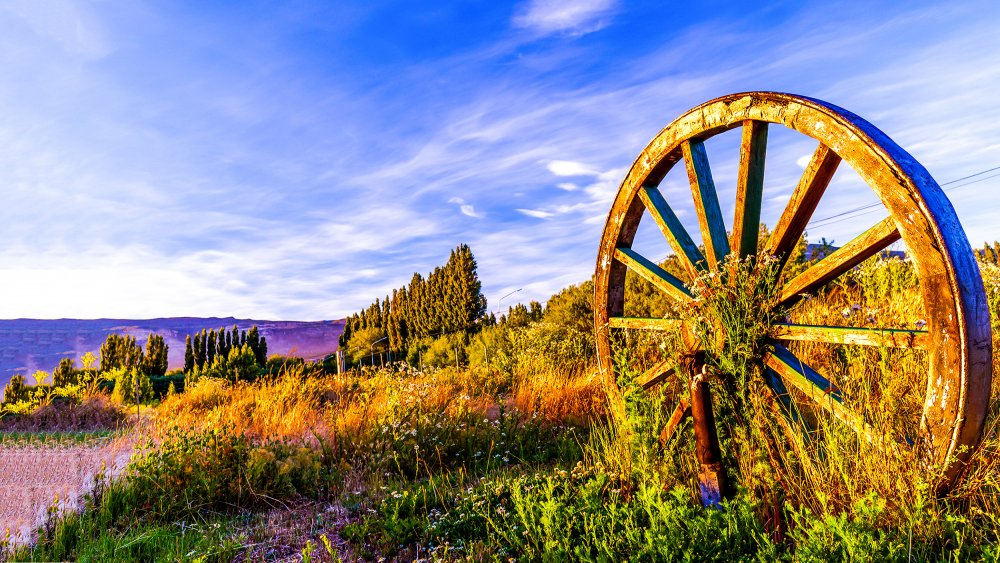
The Truth About The Mormon Handcart Tragedy

The 1922 Riots That Were Started Because Of A Clothing Item
